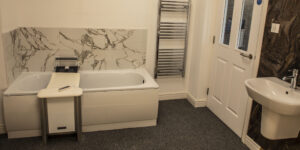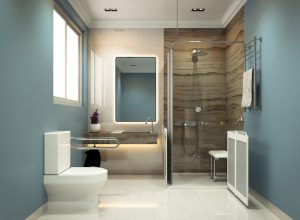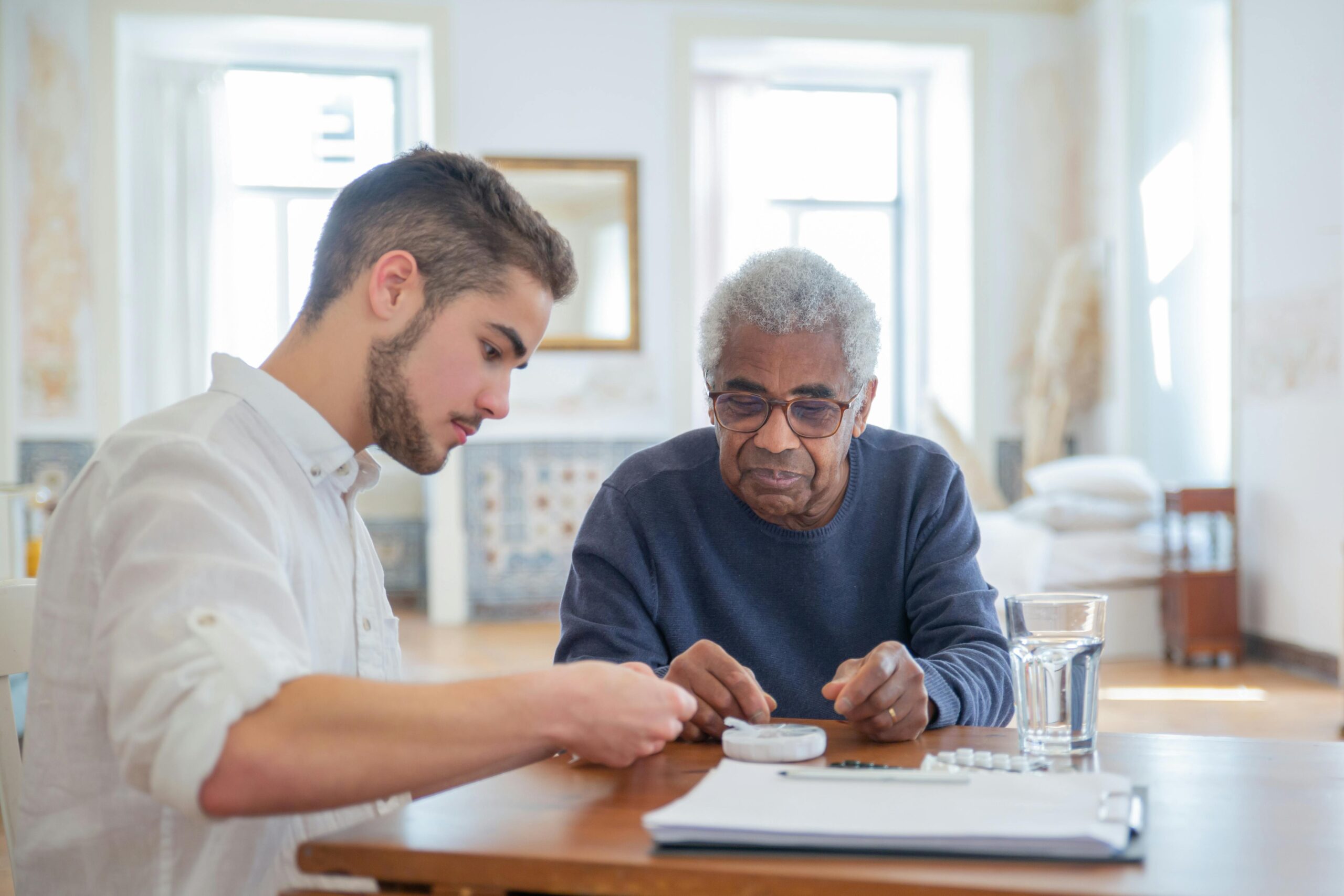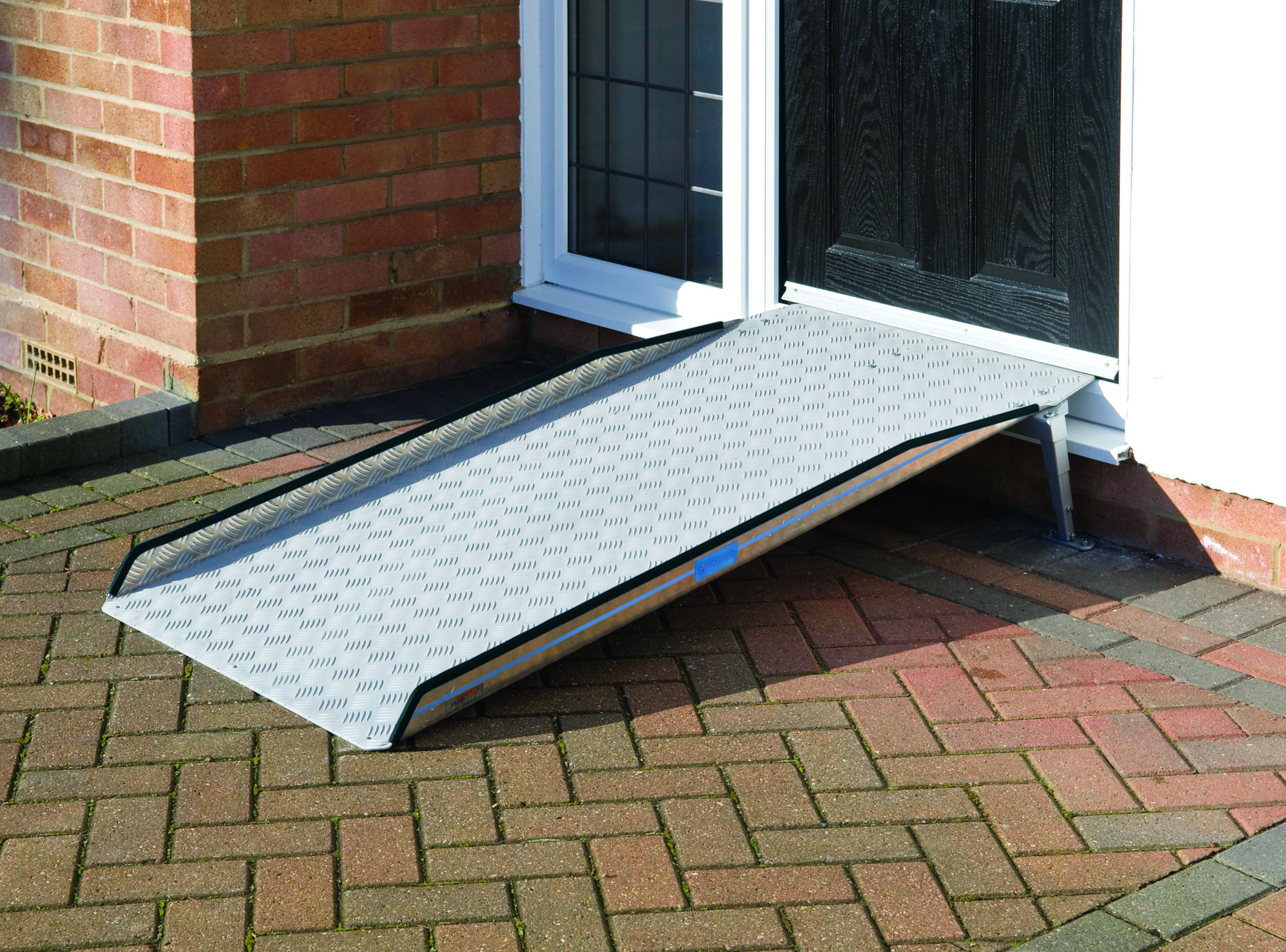Adapting your home to meet accessibility needs can make a huge difference in daily life, but it can also be expensive. Fortunately, there’s financial help available. If you or a loved one requires a disabled bathroom, here’s how you can apply for a grant and what you need to know about the process.
Jump straight to…
Council Funding for Disabled Bathrooms
Step 1: Start with a Care Needs Assessment
The first step in accessing financial support is to request a care needs assessment from your local council. This service is completely free and available to everyone, regardless of income or savings.
A trained social care professional will visit your home to assess how you manage everyday tasks. They’ll identify the kind of support, equipment, or home modifications that could improve your quality of life. If your needs meet certain criteria, the council is legally obligated to offer assistance.

Step 2: Apply for a Disabled Facilities Grant (DFG)
If your assessment shows that significant home adaptations are needed, such as installing a walk-in shower or a stairlift, you may be eligible for a Disabled Facilities Grant (DFG). This grant is designed to cover the cost of major changes that help you live more independently.
A DFG is means-tested, which means your income and savings will be taken into account to determine how much funding you can receive. However, there’s typically a maximum amount you can be awarded, and you can still apply for a DFG even if you weren’t deemed eligible for council-funded care support, because the criteria are separate.
The grant is managed and paid out by your local council’s housing department, and it can only be used for work that has been formally approved based on your assessment.
Homeowners and Renters
You can apply for a DFG whether you own your home or rent. If you’re a tenant, you’ll usually need written permission from your landlord before any adaptations can be made.
If you live in a council or housing association property, your landlord may choose to fund the adaptations directly. However, you’re still entitled to apply for a DFG and should be treated the same as any other applicant.
Step 3: Estimate Your Contribution
To help you estimate how much you might need to contribute toward the cost of adaptations, Foundations (the national body for Home Improvement Agencies) offers a helpful tool called Adapt My Home. This online self-assessment calculator allows you to check your eligibility and get a clearer picture of what financial support might be available.
You can use the Adapt My Home tool on the Foundations website.
Other Sources of Financial Support
In addition to council grants, you might also be able to get help from other charitable organisations. Many charities offer grants for home adaptations or disability equipment.
A great place to start your search is the Turn2Us website, where you can browse available charitable grants based on your circumstances.
Tips for Applying for Funding
Whether you’re applying through your council or seeking help from a charity, keep records of all assessments, permissions, and correspondence. It will make the process smoother and help avoid delays.

Conclusion
With the right support and resources, making your home more accessible doesn’t have to be financially overwhelming. Make a start with a care assessment, explore your grant options, and take advantage of the tools and charities ready to help.
Our bathroom advisors are here to support you throughout this process, so please get in touch with any queries or questions you may have.
FAQs
Q: How do I apply for a grant for a disabled bathroom?
A: Begin by requesting a free care needs assessment from your local council. If significant adaptations are recommended, you may be eligible to apply for a Disabled Facilities Grant (DFG) through your council’s housing department. This grant can cover major changes like installing a walk-in shower or accessible toilet.
Q: Who is eligible for a Disabled Facilities Grant?
A: You may qualify if you or someone in your household is disabled and intends to live in the property for the grant period (usually five years). Both homeowners and tenants can apply, though tenants typically need their landlord’s permission.
Q: Is the Disabled Facilities Grant means-tested?
A: Yes, the DFG is means-tested, considering your income and savings to determine the amount of funding you can receive. However, applications for disabled children under 18 are not means-tested.
Q: What types of bathroom adaptations can the grant cover?
A: The DFG can fund various modifications, including installing level-access showers, grab rails, accessible toilets, and other essential adaptations to improve safety and independence in the bathroom.
Q: Are there other sources of financial support for bathroom adaptations?
A: Yes, beyond council funding, charities and organisations may offer grants for home adaptations. Websites like Turn2Us can help you search for additional financial assistance based on your circumstances.









